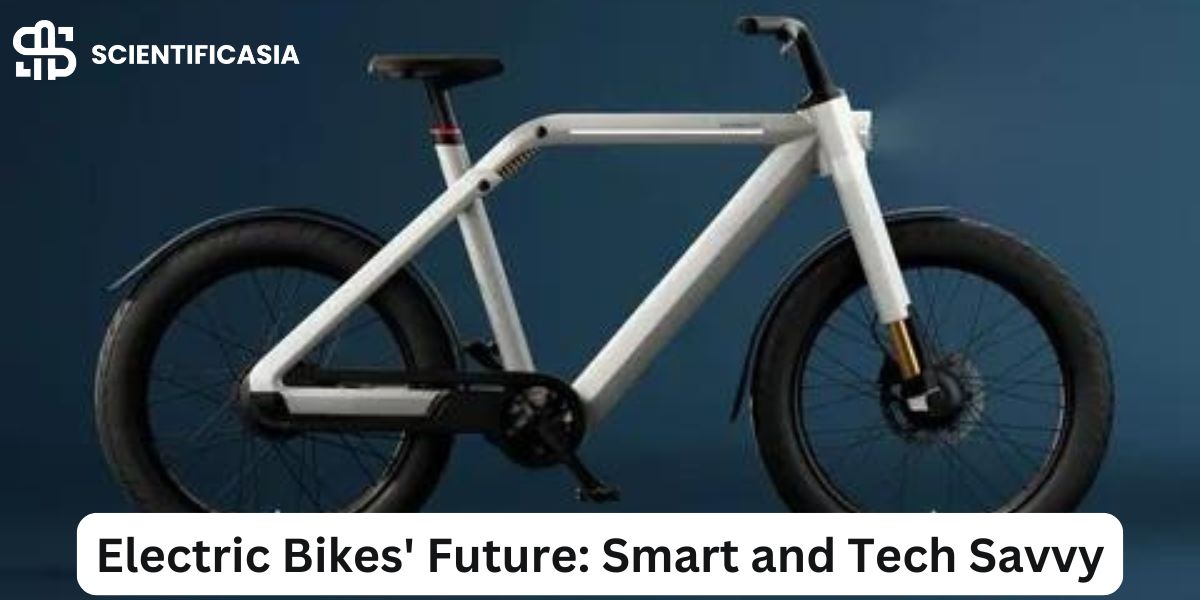Nowadays one of the amazing modes of travel is the E-Bikes. E-bikes not only make the rides easy but also give an additional push to the rider. Hence making it accessible to a large group of people.
The future’s environmental standards are being established by e-bikes. Let us take a look at how e-bikes are changing and what we can expect going forward.
Important attributes and parts of contemporary e-bikes
We adore modern e-bikes because of their marvels, which will be essential to the development of e-bikes in the future. The exceptional battery life, power, and range of these cutting-edge two-wheelers contribute to their efficacy.
The modern ebike changes the essence of riding by including sophisticated technologies like GPS and connectivity, beyond simple pedals and gears. These features increase safety as well as convenience and user involvement, making e-bikes an increasingly alluring option for riders.
Pedal assist sensors are a modern feature of e-bikes. They provide riders the freedom to adjust how much assistance they require, which is helpful for people who live in hills or want to travel farther without becoming tired.
Due to increased mass production and fierce market rivalry, e-bikes are now easier to maintain and park, and their prices are also becoming more affordable.

Compact design with lightweight materials
Modern technology is pushing the e-bike industry toward more lightweight, robust, and efficient solutions in an ever-evolving field. The use of carbon fiber components is one of these innovative trends.
What makes these carbon fiber frames so amazing? If you compare it with traditional frames these are the lighter ones. They also provide the ideal balance of rigidity and flexibility.
Additionally, these frames contribute to energy efficiency. The bike’s battery receives a direct redirection of the lost energy. Long-distance riders are raving about this increased efficiency because they need all the assistance they can get with their batteries.
Consider that to be cool. Hold on until you hear this. Manufacturers also incorporate carbon fiber into folding designs with a strong emphasis on convenience. You heard correctly. movable frames!
Talk about convenient storage in small areas. With their arsenal of tricks, these carbon fiber wonders will ensure that e-bikes stay in the fast lane as we pedal our way into the future of vehicles.
Eco-friendly production
The future of electric bikes is centered on environmentally friendly production, sustainable materials, and green transportation, which will fundamentally alter how people think about mobility. The careful selection of materials at the heart of these developments has resulted in a notable decrease in CO2 emissions.
Additionally, recycling old batteries and remanufacturing e-bike motors help preserve resources, which is advancing the cycling sector’s transition to a strong recycling economy. Traceability and transparency of raw materials are ensured by a strong emphasis on responsible supply chain management.
Automation and improvements in safety
For good reason, automation and safety features are the subject of a lot of discussion. There’s never been more talk about integrated LED lighting. Even when the sun has set, the rider can still see the road thanks to these sleek, integrated components that complement the bike’s frame. But they’re more than simply attractive people; they’re here to keep you safe.
Next, automated emergency braking (AEB) is making an appearance in the e-bike market. Cars have been using it for a long time; it’s not a new child on the block. It’s the e-bike’s turn now, though. With the use of sensors, algorithms, and other technology, AEB detects danger before you do and applies the brakes.
No more near misses. And the most recent addition is technology that balances itself. It is like having a personal cycle trainer. Remarkable programming and gyroscopic sensors ensure that your bike stays upright regardless of your level of skill. Not only is your safety our top priority, but we also want to give you the self-assurance to ride with the wind wherever it may go.

Cost-effectiveness in comparison with cars
Ebikes’ future is mostly determined by their affordability, which makes them a more affordable option than autos. The balance will tip in favor of the two-wheeler when you compare an e-bike to a car. The first thing you bought? Much less expensive. Additionally, you can wave goodbye to the ongoing costs associated with owning a car—think petrol, insurance, and maintenance—when you purchase an e-bike.
Consider your daily commute. Here, too, e-bikes lead the way. The cost per mile decreases significantly because they only require a small portion of the electricity that an electric automobile consumes. Additionally, the latest models of powerful batteries and effective motors are bringing those costs even down.
In conclusion, the e-bike industry is rapidly moving toward a more intelligent and environmentally friendly future. Innovations in battery technology, motor enhancements, and intelligent features are drawing a wide range of users to e-bikes.
The use of carbon fiber technology is resulting in lighter designs, safety enhancements are promising more comfortable rides, and e-bikes are outperforming vehicles in terms of cost, pointing to a future in which these technologically advanced two-wheelers might just take over city streets.









